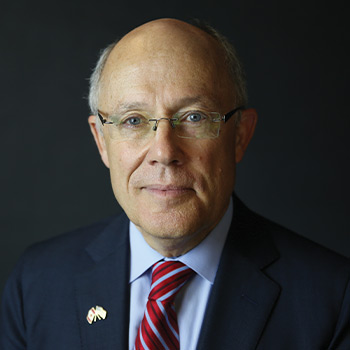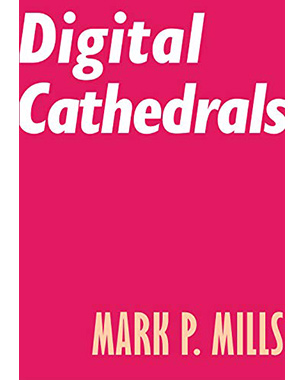
ENERGY
Mark Mills
Co-Founding Partner,
Montrose Lane Ventures
- Technology Forecaster
- Speaker
- Author
Follow
About Mark
Mark Mills is a co-founding partner in Montrose Lane, a software-centric energy-tech venture fund, a senior fellow at the Manhattan Institute, and a faculty fellow at Northwestern University's engineering school. He writes for numerous publications, including the Wall Street Journal, and his online PragerU videos have been viewed over 10 million times. Mr. Mills is the author of The Cloud Revolution (2021). His previous books include Digital Cathedrals: The Information Infrastructure Era, (2020), Work In The Age Of Robots (2018), and The Bottomless Well, (2005), about which Bill Gates said, "This is the only book I've ever seen that really explains energy." He served as Chairman/CTO of ICx Technologies helping take it public in a 2007 IPO. Mr. Mills served in President Reagan's White House Science Office, and earlier, was an experimental physicist and development engineer in microprocessors and fiber optics, earning several patents at Bell Northern Research (Canada's Bell Labs) and RCA Semiconductor.
Mark's Videos
Mark Mills discusses how the United states has created a serial glut in the oil market through advancements in technology.
Mark Mills highlights opportunities for investors within the technology sector as we enter a new phase as a result of automation technology.
Mark Mills states that we will see winners and losers at the end of the current era of serial gluts, which was caused by the U.S. and as a result of improvements in technology.
The immersive Internet makes connectivity ubiquitous, seamless, and utterly natural. An immersive network spreads outward to connect every physical thing around us—cars, drones, machines, packages, pets. And it spreads inward, to monitor our bodies, respond to (or anticipate) our requests (Siri, Amazon Echo, Google Home), and fill our senses (Oculus virtual reality, augmented reality). The immersive Internet goes beyond the PC and smartphone and weaves into the fabric of our world.
Mark's Books
Mark Mills
Digital Cathedrals
We are now witnessing the build-out of society’s first foundationally new infrastructure in nearly a century: the Cloud. It is an ecosystem of information-digital hardware, at the heart of which resides massive warehouse-scale datacenters unlike anything ever built. Given the resources committed to them and the reverence afforded to the companies that build and own them, datacenters might be called the digital cathedrals of the twenty-first century.




